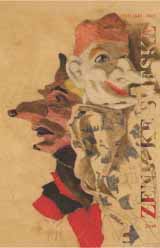
Experience of moral mind
Iskustvo moralnog uma
Kritičko preispitivanje i spas od hipnotičke postojanosti političke i nacionalne narcisoidnosti
More...
Kritičko preispitivanje i spas od hipnotičke postojanosti političke i nacionalne narcisoidnosti
More...Keywords: sustainable development; leadership towards sustainability
The available empirical evidence suggests that contemporary globalisation is unsustainable in the long run unless we introduce new institutions and new applied policies which will deal with this global problem. The social order in which profit above all else" rules cannot be an efficient regulator of the balance between material growth and the natural resources of life. Thus a new direction of development is needed which will not repeat the mistakes of the old one. This new direction offers the concept of sustainable development which presupposes a considerable amount of social change and which has the character of a global societal social innovation. The two main pillars of sustainable development are "learning for sustainability" and "leading change towards sustainability". This article is dedicated to "leading towards sustainability" as a conscious and planned activity of democratically chosen political elites and other decision-making actors regarding the direction and modes of modern development. Leadership is by no means the dictatorship of the individual or cliques, a monopoly, or a type of "eco-fascism". In the article, the author considers the question of why sustainable development cannot be spontaneous, and why it has to be purposefully managed. Efficient leadership presupposes that the social actors of leading change towards sustainability have to internalise sustainability, life preservation and survival as the ultimate value and their special interest, and have to systematically "feed themselves with new knowledge". The production of social actors for leadership towards sustainability, a kind of "production of actors of sustainable future" is the most important task of modern education systems throughout the world.
More...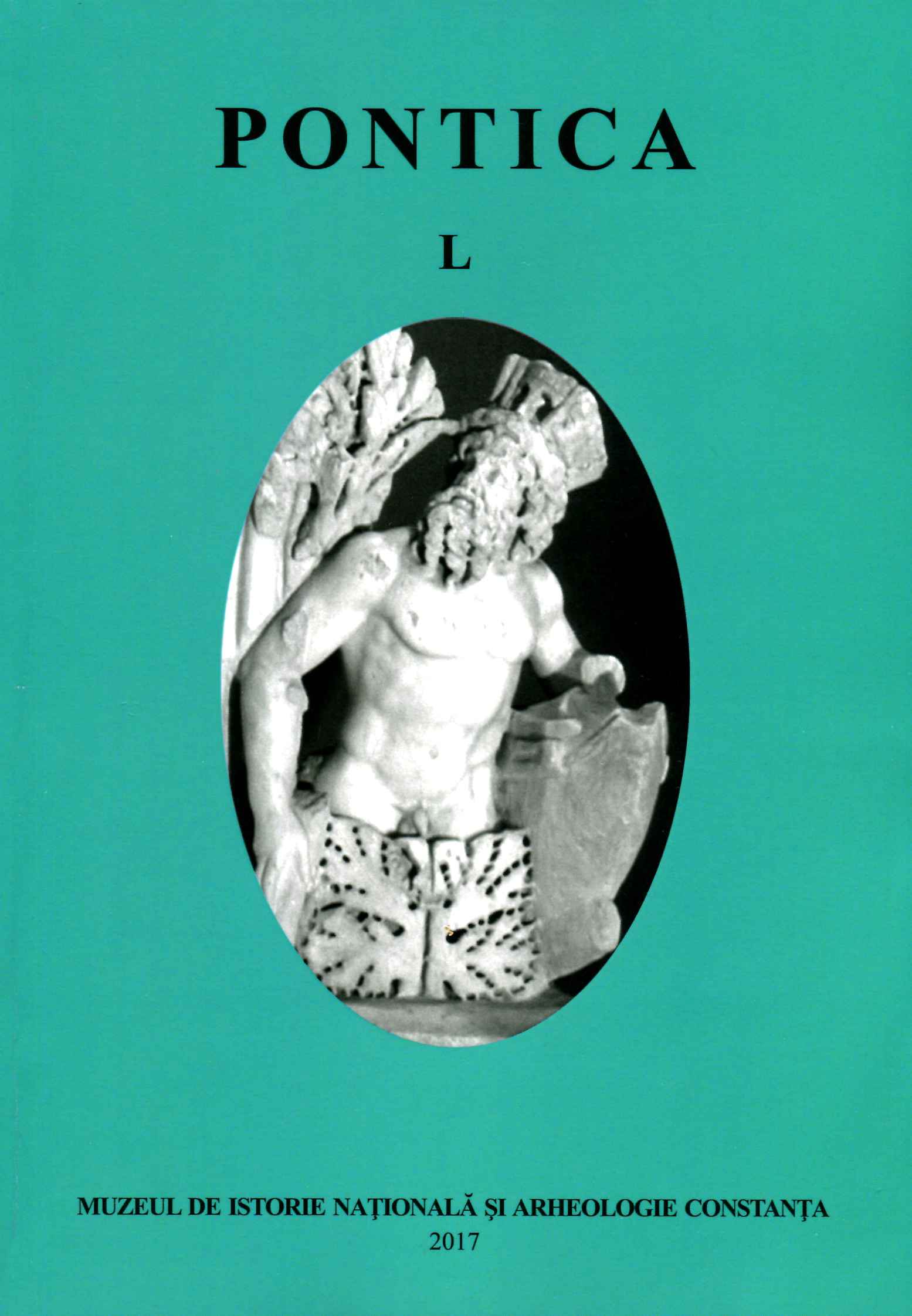
Keywords: Istros; Histria; Thales; Hippodamos; orthogonal urban system; fortifications; precincts; Acropolis; Plateau;
The article is intended to analyse the information that we have today about the urbanism of the Greek city, in its different stages of development. The opportunity was the observation on orthophotoplans of traces that could be interpreted as an orthogonal urban grid on the Plateau, i.e. the western part of the site. This possibilty is discussed in the context of the results of previous exacavations in this area and of the discovered structures that would support this idea. The total surface of the city is difficult to estimate because an important part was submerged by the lake Sinoe, mainly to the North but to the East, as well. The surface enclosed by the fortifications dated to differtent Greek periods are estimated as:fortifications of the Acropolis (Archaic = 4.3 ha, Classic = 20.8 ha and Hellenistic = 7.4ha) and of the Plateau (Arhaic = 27.1 ha, Classic = 21.8 ha and Hellenistic = 32.3 ha). Thus, the minimal inhabited areas of Histria were approximated at 37.4 ha (Arhaic), 42.6ha (Classic) and 39.7 ha (Hellenistic). The traces of an orthogonal urban grid with the following dimensions is presumed in two areas of the western Plateau:E-W (dev. ~2°) = 100 ionic feet = 0.295 x 100 = 29.500 mN-S (dev. ~2°) = 133 ionic feet = 0.295 x 133 = 39.235 mLength-width ratio = 1 : 1.33Area = 100 feet x 133 feet = 29.500 m x 39.235 m = 1,157.43 m2But, of course, future surveys, topographical measurements and excavations have to confirm this hypothesis.
More...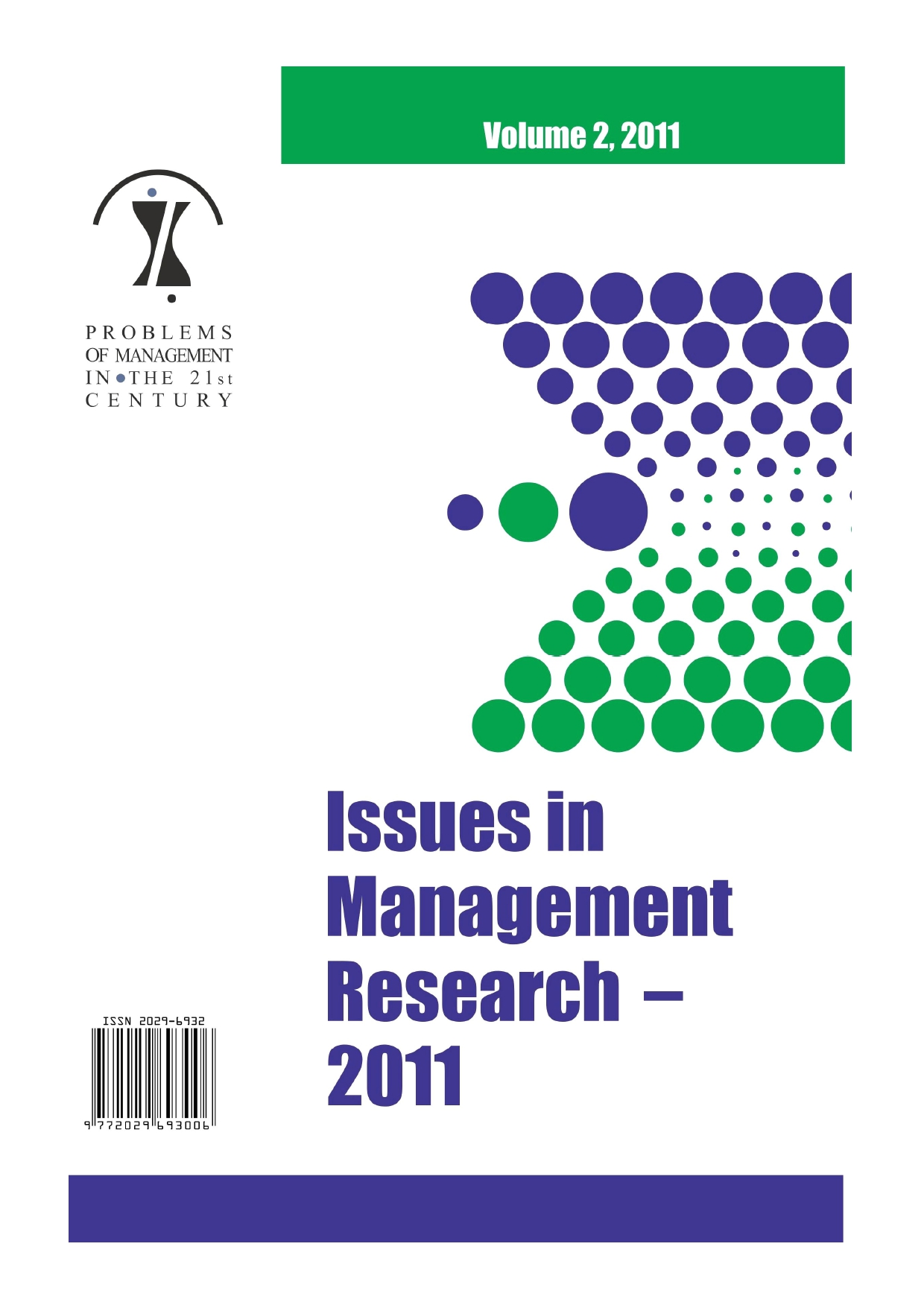
Keywords: global problems; national states; United Nations; cosmopolitan state;
Article researches the capacity of national and supranational levels for the governing and managing of global problems. Consumerism and profit per se have brought the world into the collision with nature and people’s ability to cooperate with each other, disregarding their selfish and personal interests. Today’s inability to rule the world is shown in national interests: states still manage their affairs regardless of the interests of other states. Global problems are beyond that; better sooner than latter, one has to respond to Nietzsche’s question of managing the whole world with the formal proposition to strengthen the United Nations that is better than an arbitrary coalition of powerful states, other global power structures, or corporation elites. We should not wait for the new world war to bring more effective ways for solving global problems, because their current negative effects speak themselves in favour for the new global order. Paper is based on thoughts of great thinkers and favours the path to global constitution and federation of states, which could be possible to achieve if the UN will put democratic elements in most of its operations at first in its institutions.
More...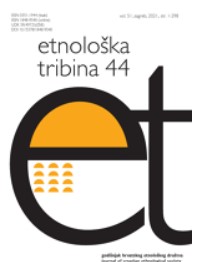
Keywords: sacred spring; interreligious relations; shared shrine; shrine politics; Podmilačje; Bosnia and Herzegovina;
The Mrtvalj spring is an integral part of a more complex sacred landscape, the center of which is the Shrine of St. John the Baptist located in Podmilačje near Jajce, Bosnia and Herzegovina. The shrine is a multi-confessional pilgrimage destination that is also very popular within the wider region. The Mrtvalj spring is one of the key stops in pilgrimage itineraries, but it is not only a sacred place within pilgrimage practices. In this paper the conceptualization of the Mrtvalj spring’s sacredness is examined as a reflection of the relationship between the religious and the political. The author analyzes the relationship between the shrine’s politics, which are based on the ideas of a “Bosnian Lourdes” and a shared shrine, and the spring as a focal point for the shared non-institutional practices of believers of various religious affiliations. She aims to show that a shared sacred site does not necessarily have to be controversial, and calls for a revalorization of non-institutional religiosity, which has proved to be a rich phenomenon for the study of interreligious relations.
More...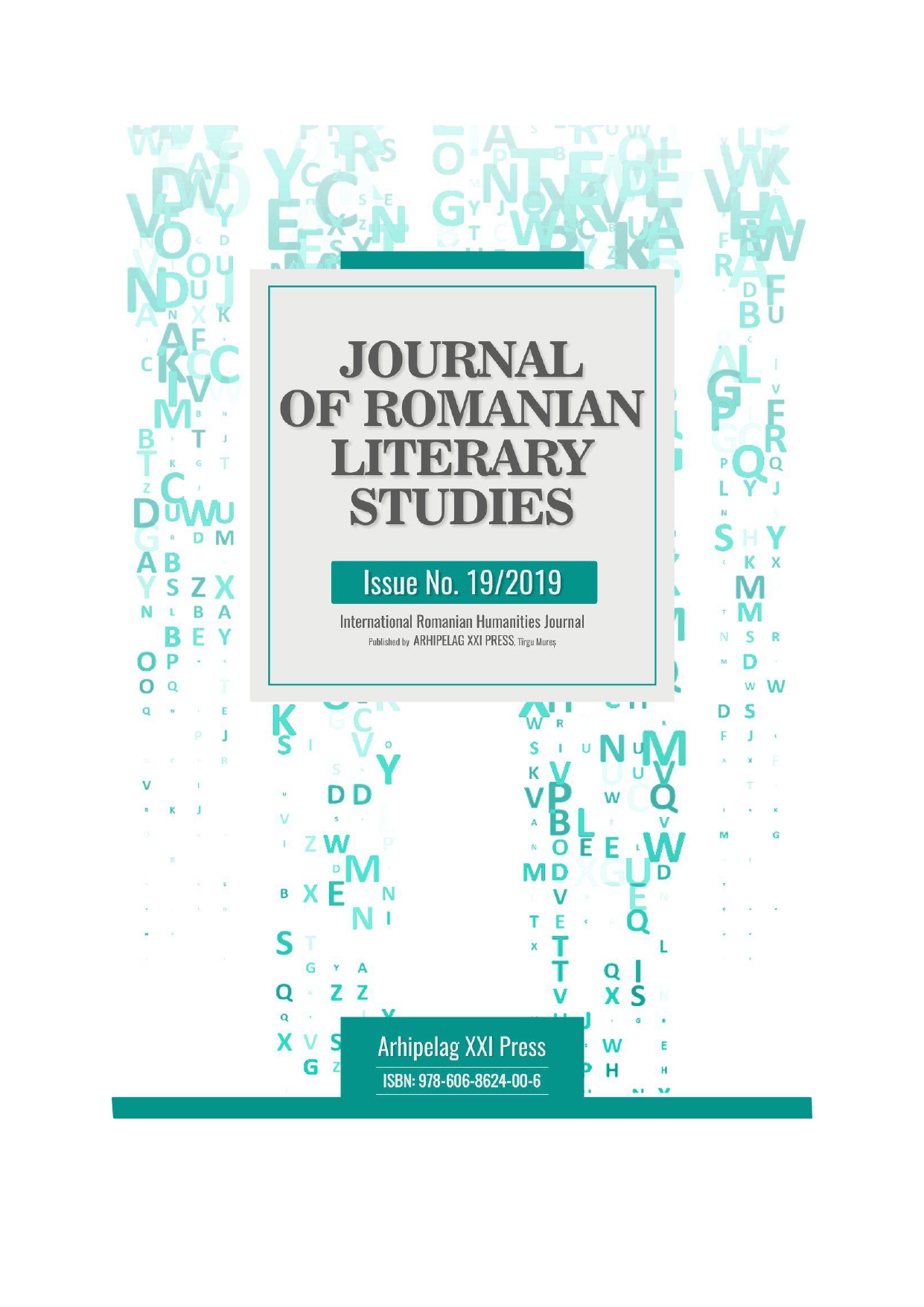
Keywords: human rights; Council of Europe; freedom; equality; pluralism;
Options are divided when it comes to the origin of consecration of the human rights in Europe. Some analysts consider that a fundamental role was played by ancient Greek thought or by the Christian religion. Others opinion is that English constitutional history, the philosophy of the Century of Lights or the French Revolution have contributed to the development of the human rights concept. This process of affirmation of the human rights in Europe has been accelerated by the two world wars.
More...
Keywords: vampire; Dracula; myth; film; popular culture;
Across time, the stories about vampires have evolved, adapting to new cultures and to ever-evolving social mentalities. Dracula – perhaps the most famous vampire figure – has undergone radical transformations in popular culture, generating a great variety of vampire types and sub-types.This paper aims to briefly present the evolution of the vampire figure in popular culture (especially inliterature and film), starting with the publication of Stoker’s epistolary novel “Dracula”, and focusing on Rice’s “Vampire Chronicles” and on several well-known films, such as “Dracula” (1931), “Bram Stoker’s Dracula” (1992), “Interview with the Vampire” (1994), “The Twilight Saga” (2008-2012), the “Underworld” series (2003-2016) and “Priest” (2011).
More...
Keywords: archives; Bukovina; documents; linguistics; legal-administrative style;
The legal-administrative (official) style occupies a central place among the functional styles of the Romanian literary language, being considered as one of the oldest of them, thanks to the recorded texts, which are subscribed to it, the beginning stage being signalled with the appearance of the first codices in Romanian. Concern of many researchers, linguists and historians alike, found in all the classifications of the functional styles of the Romanian language, the legal-administrative style has offered, over time, a rich and interesting study material from different points of view, the stylistic particularities that have the attention was retained being used in reference works. Since in our doctoral research approach we intend to achieve it from a linguistic perspective an analysis of the language used in the official documents of historical Bukovina, after its union with Romania, we will present in this article a preliminary monographic approach to the administrative style upon the whole, with examples extracts from the archive background.
More...
Keywords: complex predicate; verbal periphrases; aspectual operator; verbal semantic support; Spanish journalistic discourse;
Our study aims at highlighting the semantic-grammatical particularities and the combinatorial possibilities of the aspectual operator from the complex predicate composition in the Spanish language within the current journalistic discourse. The analysis will be performed from the perspective of the traditional descriptive synchronic grammar, based on the definitions and classifications of the complex predicate with aspectual operator existing in „Nueva gramática de lengua española”, 2009.
More...
Keywords: translation strategies; phraseological discourse; Camilo José Cela; contrastive studies;
Phraseological units are at the core of any language. Users resort to them because they are ready-made blocks –learned and reproduced as a whole– that can express thoughts, ideas and feelings in a concise and expressive manner. Fixed form, semantic stability and idiomaticity are their main linguistic traits. Translation and Phraseology have been closely interlinked, given the symbiotic nature of their evolution: idiomatic structures tend to appear more in literary works, which leads translation theorists to focus more on how to properly translate such structures. The aim of the current paper is to provide a synoptic framework of the main theories concerning translation, followed by a contrastive analysis regarding the manner in which the described strategies are applied in literary translation, i.e., the Romanian translation of Camilo José Cela´s novel, La colmena.
More...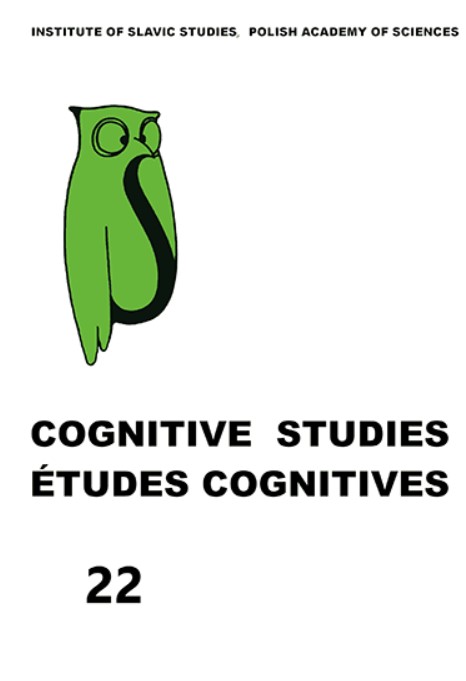
Keywords: directive speech acts; performative utterances; imperatives; infinitives; indirect utterances; subject; predicate; recipient; rheme; Ukrainian;
The article presents a comprehensive multifaceted analysis of directive speech acts (based on modern media texts from the popular Ukrainian newspaper Day) taking into account the following approaches: 1) cognitive-semantic, with the projection of directive statements on extralingual reality, the study of their propositional-syntactic structure, and semantic relations between components; 2) formal-grammatical, which involves the identification of morphological and syntactic means of expression of motivation and the specifics of the positional structure of sentences; 3) communicative-syntactic, which allows for the characterization of directive statements in terms of their intonation and actual articulation; 4) communicative-pragmatic and discursive, which focuses on the specifics of certain types of directive speech acts in specific discourses, their perlocutionary effect, pragmatic intentions of the speakers, their communicative strategies and tactics, the interaction of the addresser and the recipient and more. Directive speech acts with infinitives, verbs of imperative, conditional and optative moods, present, past and future tenses, which are based on performative constructions, are distinguished from the formal-grammatical point of view. They all have the same propositional meaning, which at the semantic-syntactic level of the sentence is implemented in the following obligatory syntaxemes: the subject (speaker), the predicate of volitional action, the recipient of volitional action or the potential subject of action, and the predicate of potential action. In specific communicative acts, the syntaxeme of the subject of volitional action is correlated with the recipient of speech, i.e., the speaker expressing the communicative intention of motivation, and the complex syntax of the recipient of volitional action-subject of potential action – with the recipient of speech, i.e., the interlocutor from whom the speaker expects on his volition.
More...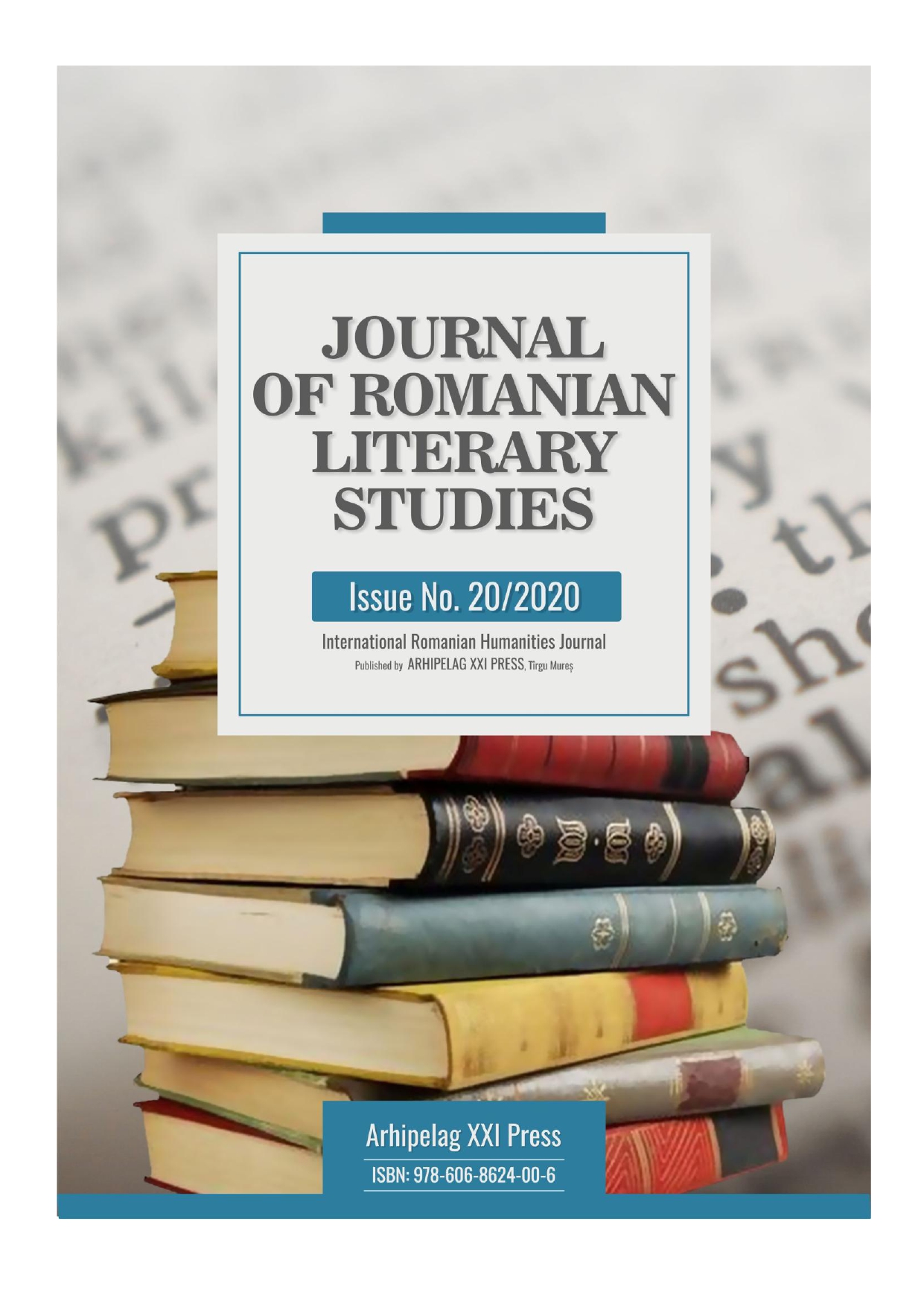
Keywords: dominant position; internal market; relevant market Court of Justice of the European Union; European Commission;
Articles 101 and 102 TFEU have the same goal, namely to ensure functional competition in the internal market. But the goal is not the only similarity between these articles that prohibit and penalize anti-competitive practices; "enterprises", relevant market have the same content in both cases. All also both provisions are only incidents where trade between Member States is affected to a significant extent and whether competition is prevented, restricted, distorted in an appreciably mode. The conditions are analyzed according to the same criteria, the TFEU exemplary cases are provided with inherent differences in the same. The indication, the development of terms used by those two articles Court of Justice of the European Union has made a special contribution.
More...
Keywords: education; Romanian language; identity; evolution; specific;
Education is the most important sector of the culture of the Romanian national minority living in the Republic of Serbia. As an institution, aside from the Church, school is one of the primary factors that has contributed to the cultivation and preservation of the mother tongue and national identity, as well as to the creation of cultural values that identify and afirm the Romanian national minority in the multicultural context of Serbia.The historical evolution of education with Romanian as the teaching language, with the modalities of school organization and their distribution, is presented in several monographic studies signed by local authors.In the present article we highlight some essential aspects concerning the evolution and specificity of the schools with Romanian as the teaching language, without neglecting the real and visible sinuosities. The maximum reference period of this research is the interval between the time when the Romanians from Vojvodina (currently in the Republic of Serbia) became minority and the present time.
More...
Keywords: mental translation; self-translation; Panait Istrati; linguistic competence; culturally bound terms;
This article approaches the subject of mental translation in the case of French-Romanian writer Panait Istrati. Mental translation appears as a first stage in the process of self-translation and it derives from the unusual choice of the language in which the writing is done. Usually, mental translation is considered an important element for postcolonial writers, as their activity stands at the crossroad between national heritage and colonial linguistic imprint. In the case of the Romanian writer, this issue emerges from the underlying circumstances of authorʼs literary activity that was initiated in France and later followed by publishing the Romanian versions in his home country. Understanding the mechanisms of mental translation in literary creations holds major importance for the self-translation process. Not only it gives a more profound description of this type of texts but it also illustrates the great intercultural role played by self-translators on the universal scene of literature. Our demonstration will be grounded on the integral linguistics of Romanian linguist Eugen Coșeriu, as it provides a vast conceptual framework – starting with the concept of ʼlinguistic competenceʼ – that can give a broad view of how mental translation is done. Moreover, we will illustrate the existence of this type of translation in one of Panait Istratiʼs works, Oncle Anghel / Moș Anghel, with the help of the same scholarʼs theory upon text linguistics.
More...
Keywords: ethno psychology; empirical; retrograde; technology; popularization;
Once arrived to Bucharest, George Cosbuc had noticed that some negative life traits of villagers (magical practice, empirical medicine, ignorance for science) had been the same ones as the ones mentioned in the Enlightenment a century ago. He was involved in dismissing them on three planes: by converting some folkloric stories, by consolidating the school through articles and conferences to show badly practices or making public the scientific discoveries and work techniques. In these paper his contributions are analyzed, those that made him one of the most important personalities who thought towards that direction.
More...
Keywords: Magic Realism; ethnicity; identity; Jewish American; Holocaust;
Magic Realism is a topic widely discussed and debated among critics all over the world. This term and this literary genre, from its very beginning, seemed to have created some difficulties in its usage and understanding. Many writers have chosen to use Magic Realism and to incorporate the magical into the everyday reality, writers like Gabriel García Márquez, Isabel Allende, Salman Rushdie or Laura Esquivel. In addition, there is an increased interest in literature and literary criticism for topics related to race and ethnicity and there is a considerable growth in the writings produced especially by American writers coming from different ethnic backgrounds. However, there seems to be a lower interest and amount of literary criticism given to those American ethnic writers who have chosen Magic Realism in their novels. These American ethnic writers seem to be concerned with specific literary themes, among which there is the theme of identity. Therefore, the purpose of this paper is to analyse the Magic Realism and the theme of identity in the novel Everything is Illuminated written by the Jewish-American writer Jonathan Safran Foer.
More...
Keywords: cultural pedagogy; finality; vision; cultural values; pedagogical epistemology;
The purpose of the present theoretical study was to explore the characteristic elements of the pedagogical point of view of Ștefan Bârsănescu. The main areas in which the pedagogue had great contributions were the general pedagogy, politics of education, the pedagogy of culture and the history of pedagogy. The main purpose of education is the formation of cultural personality, characterized by the ability to develop and create axiological values. The pedagogue elaborated and explained the educational concepts from a holistic perspective, which contributes to his being considered as a master of Romanian pedagogy.
More...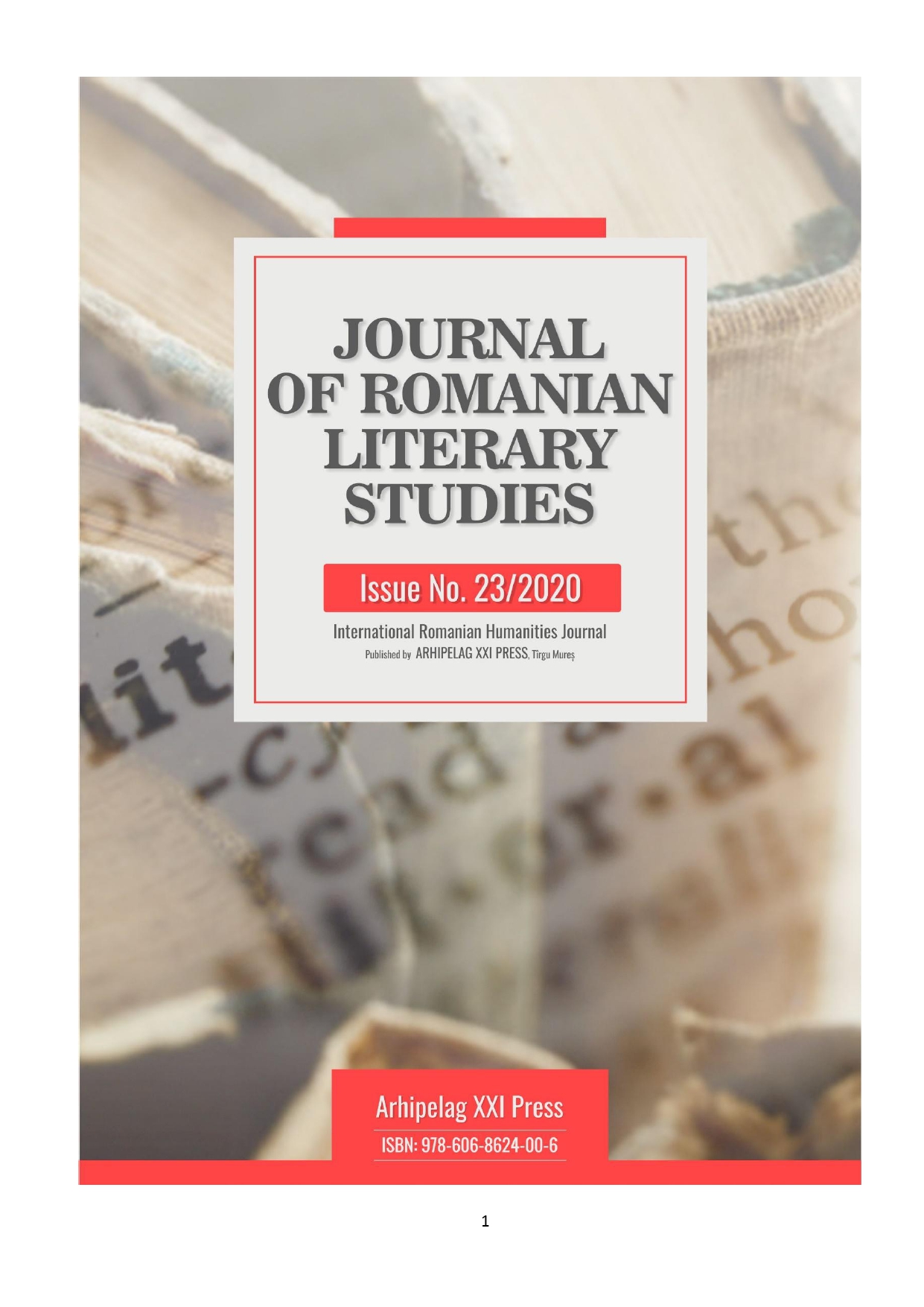
Keywords: antimodernism; Antoine Compagnon; Victor Papilian; short stories; literary technique;
Victor Papilian’s literary work still reveals more and more meanings, symbols and literary value if one has the interest and patience to take an in depth approach into the most significant and valuable part of it, the fantastic short stories. His antimodernist perspective of the world and of the writer’s status in the middle of the artistic act can be easily identified as being of a certain influence, maybe the one of Antoine Compagnon, Papilian being aware and always prepared with the most recent literary terminology of his time, but can and will also be presented in this paper as a unique, unitary and complex vision of an artist. This antimodernist approach identified as an artistic perspective does not only rely on the artistic act of creation, but also on the social responsibility of providing a serious, professional and important legacy to the public.
More...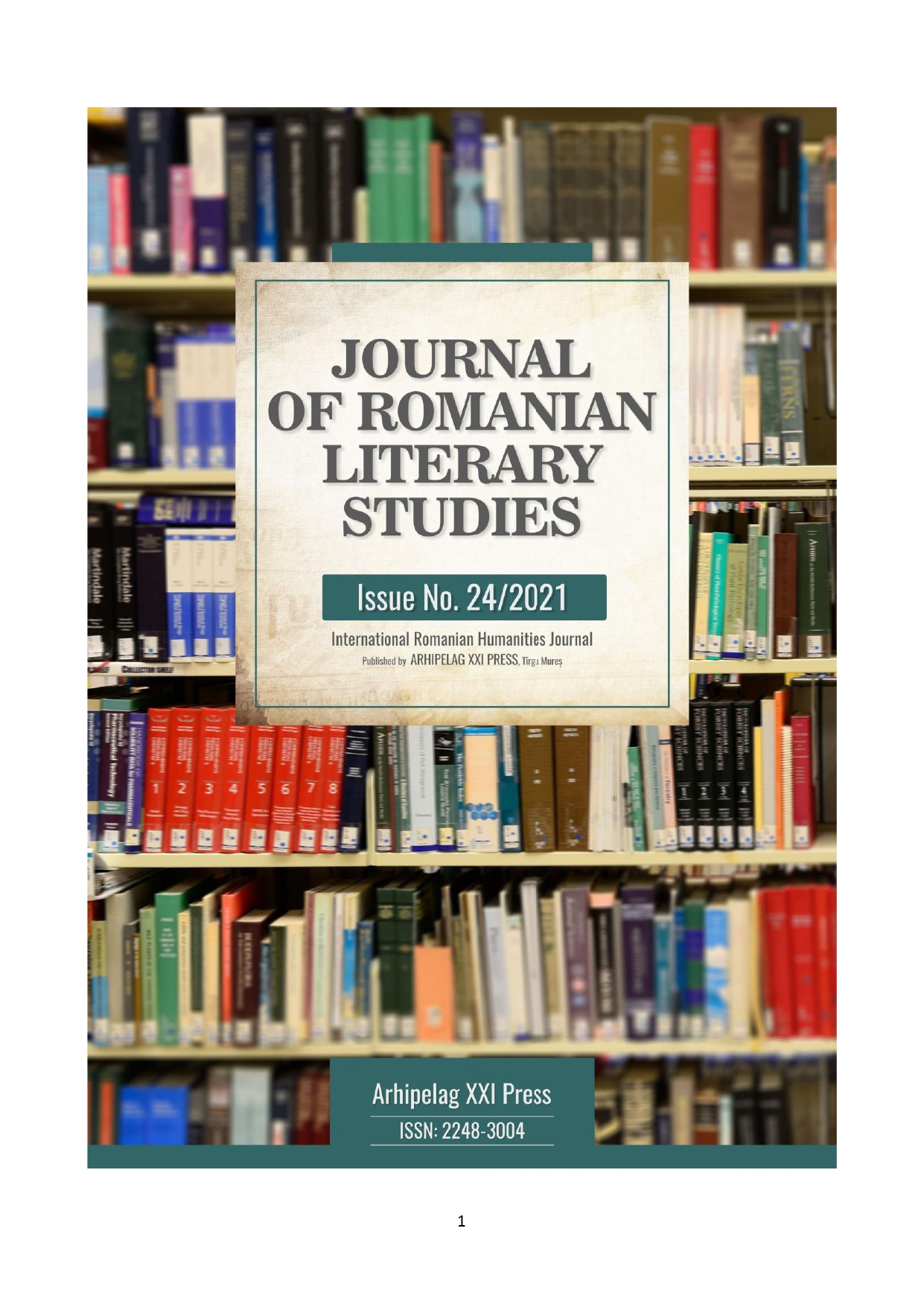
Keywords: re-reading; critical discourse; poetic imaginary; irony; literaturity;
The latest version of the volume dedicated by the literary critic Eugen Simion to our 19th century poets suggests a fresh re-reading of the writings which fully mark the beginnings of the Romanian poetic writing and the complexity of the process of establishing a specific poetic language. Simultaneously with this re-reading, the critical discourse detaches itself as a distinct way of reshaping the specific marks of early Romanian lyrics, irony being one of the characteristics of this discourse. A flexible irony, able to retain the stylistic geometry of the poetic writing, in all its diversity, and to exemplify it through its own rhetoric, that of the critic who enjoys re-reading it.
More...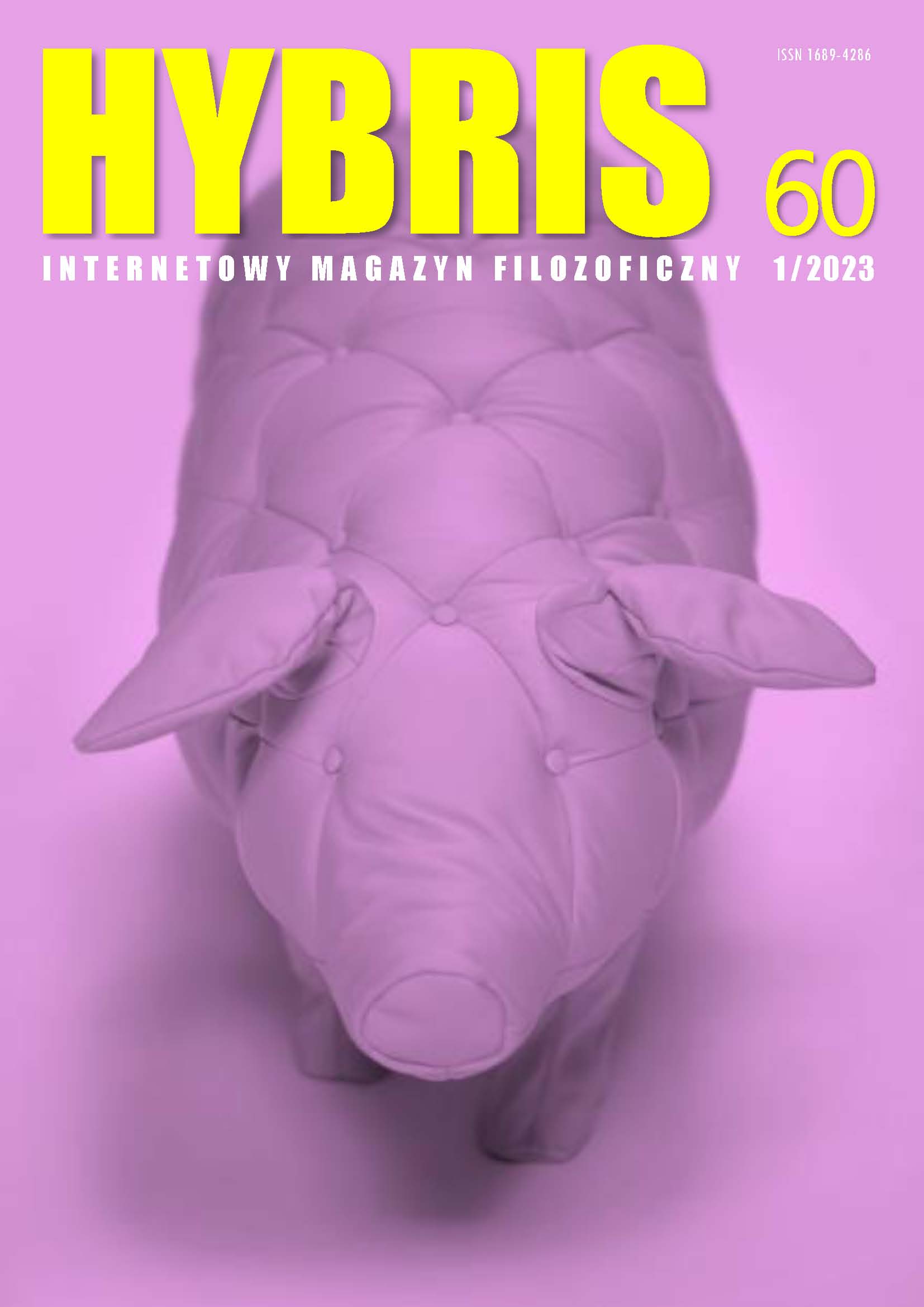
Keywords: philosophy; history of philosophy; Ukrainian culture; Baroque; church sermon
This article analyzes the preaching activities of Antonii Radyvylovsky in order to distinguish in the preacher’s output the general characteristics of the Baroque period, formed under the influence of other cultures. Particular attention is paid to the humorously ridiculous aspect of the preacher's works, which have not been considered at all before. The source base for the study is the handwritten and printed sermons of Antonii Radyvylovsky from his collections The Fenced Garden of the Virgin Mary and The Crown of Christ. It is concluded that Ukrainian Baroque, while absorbing the main features of European Baroque, had its own characteristics. In this context, the legacy of the prominent XVII century Ukrainian preacher Antonii Radyvylovsky constitutes a typical example of the introduction of Latinizing Christian traditions into the Orthodox liturgy. In the center is a "living" earthly man with his virtues and flaws. The main theme in the moralistic examples in Radyvylovsky's sermons is that of a righteous and sinful (moral and immoral) life. His humorous and satirical discourses allowed Radyvylovsky to develop in his listeners a capacity for a paradoxically Baroque repentance, which is closely tied to personal reflection through laughter.
More...